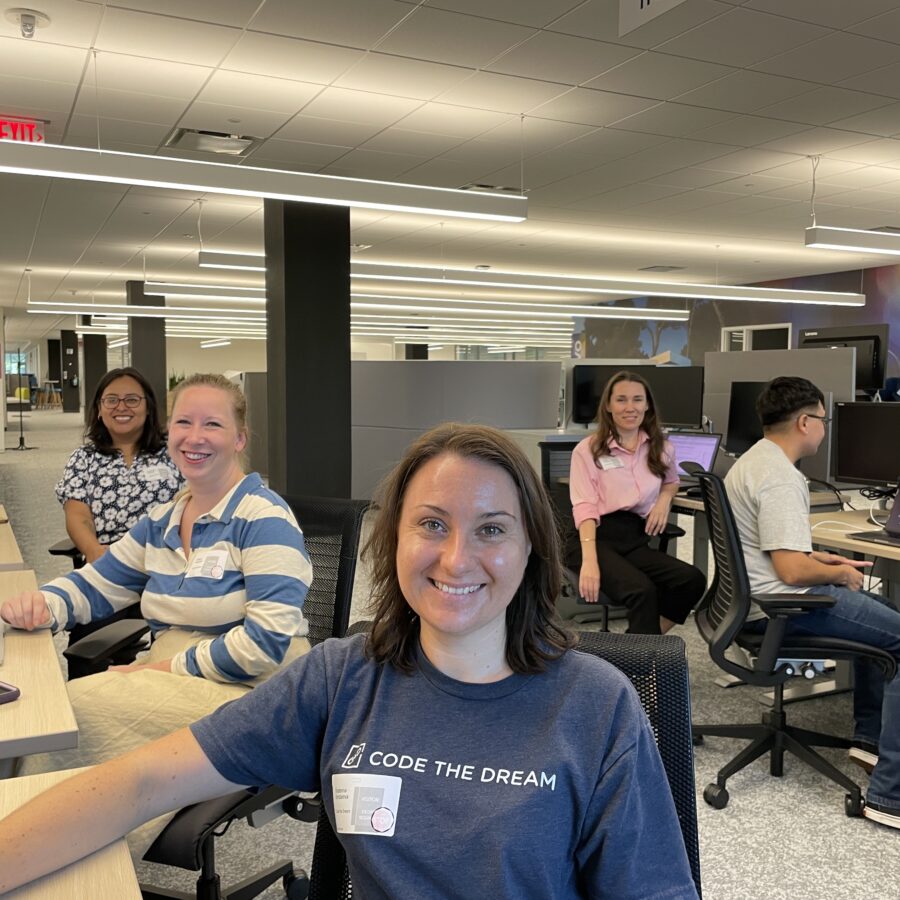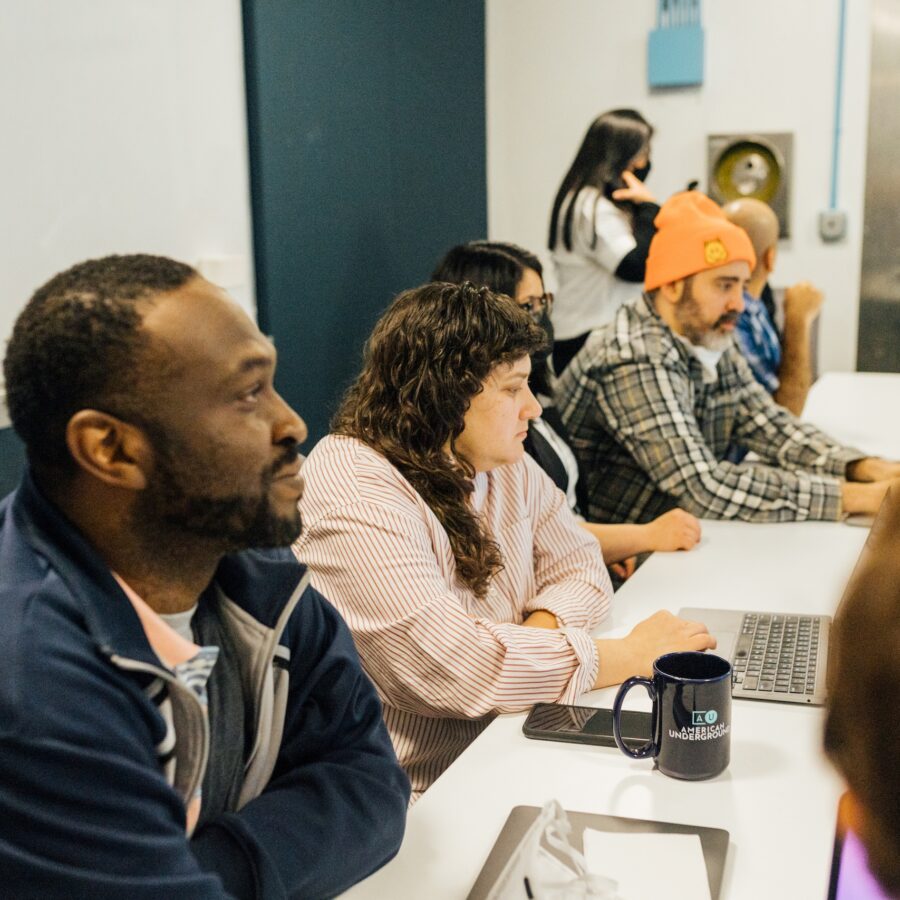Have you ever wondered what it’s like to be in Durham, Raleigh and Mexico all at the same time? By simply holding your phone up to two murals in downtown Durham, you can do just that.
A new augmented reality (AR) app has the power to transport you through a virtual portal to the inside of Raleigh’s North Carolina Museum of Art, where the exhibit “Frida Kahlo, Diego Rivera, and Mexican Modernism” is on display through this Sunday, Jan. 26.
The app, called Mariposa AR and designed by two programmers at Durham’s Code The Dream school—which we wrote about last year—launched on Wednesday. That drew a crowd to the two side-by-side murals located on the 100 block of East Chapel Hill Street in Durham, directly across from the Ninth Street Bakery parking lot.
The murals—”I Am My Own Muse” by Cecilia Lueza and “Juchari Ziranhua / Nuestros Raices/ Our Roots,” by Cornelio Campos— were commissioned by the NCMA in the fall. The murals are inspired by the work of artists like Frida Kahlo and Diego Rivera, and feature large yellow butterflies flitting about.
“It talks a lot about a community of support and a community of creativity that was happening at that time in Mexico City,” said Angela Lombardi, manager of academic and community outreach at the North Carolina Museum of Art. “To take that work from the exhibition and turn it into a piece of public art was a nice connection in terms of celebrating the Latinx community in Durham and also across the state.”
When using the app, you hold your phone in front of the yellow butterflies to launch the AR. Among other things, you can walk through a portal that will then give you a 360 degree view of the exhibit at the NCMA. You can also see the stories of others who have viewed the mural—especially the story of how they and their families came to America—while adding your own to the mix.
While the exhibit will end on Jan. 26, the app will keep it alive at least for the foreseeable future. There are currently no end dates scheduled for the app or the murals.
The AR side of the project, commissioned by Google Fiber, was created by a team from Code the Dream, a Durham-based software development nonprofit that gives people from diverse low-income backgrounds the chance to gain tech experience while building apps that help the community. Their team consisted of two developers and a supervisor.
The developers, Irene Serrano and Jorge Rodriguez, are both originally from Mexico. To them, this project hit close to home.
“Just being able to show this to anyone in the world, even in Mexico City,” Rodriguez said. “That I created an app that basically ties in with Frida and Diego in such a way that they’re able to see it without bringing them all over here I think is very powerful.”
Serrano echoed his sentiments about the app’s ability to transcend borders.
“You can go in the app and share your immigration story or about your ancestors or read other peoples’,” she said. “So it’s connecting everything—connecting peoples’ stories, connecting art.”





